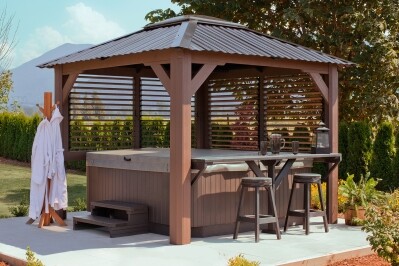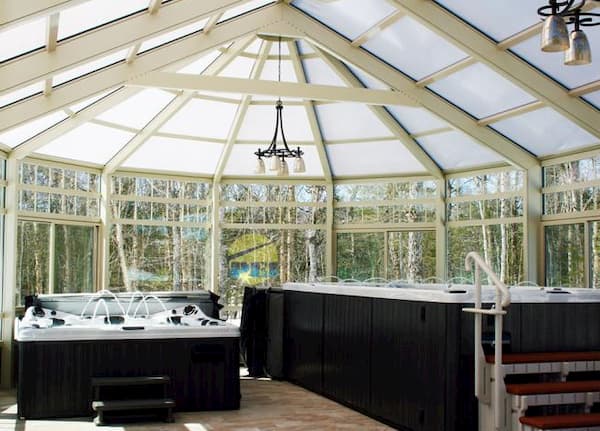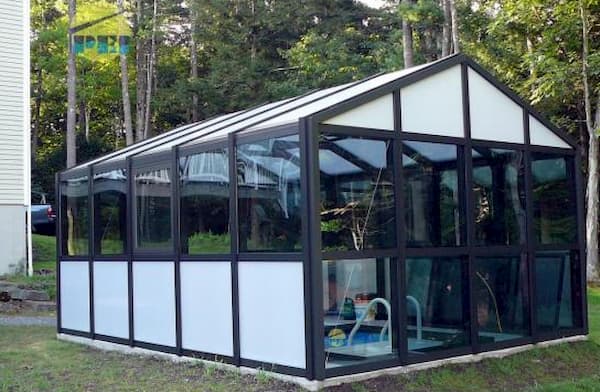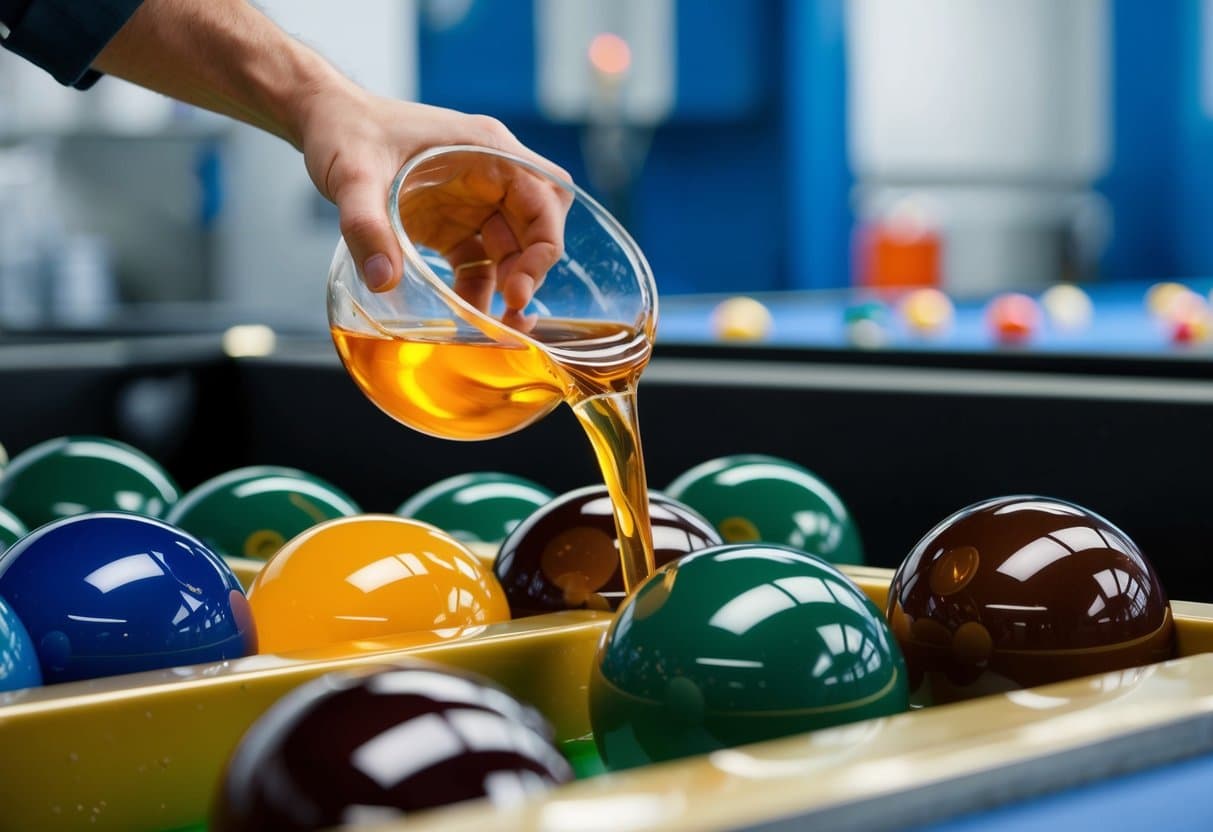Whether you’ve had your spa for years or are considering a new installation, you’ll enjoy the added privacy from a number of different hot tub enclosures.
The options for privacy range in style, benefits as well as cost.
Consider the following options when coming to a decision about which type of enclosure suits your spa best.
- Privacy screens
- Gazebos
- Pergolas
- Full enclosures
Privacy screens
If you’re looking for something that will give you privacy at the lowest price possible, a privacy screen may be the way to go. You can remove and reposition a privacy screen as you see fit or leave it out of sight if you so choose.
Gazebos
There is a wide range of options to choose from when choosing your style of Gazebo. Essentially, a gazebo is a roof with four posts that hold it up over the hot tub. You can get as fancy as you want by adding walls made up of screens, mesh, wood or whatever you see as the best option for creating enough privacy.
There are DIY gazebos or you can have them professionally installed.
Pergolas
A pergola is similar to a gazebo except it doesn’t have the same type of roof. A pergola will typically have an open-style concept with wooden beams or a mesh-like pattern that provides more ventilation, but less privacy.
You can decorate pergolas by planting vines to grow through the structure or hanging flowers and plants from the beams. There is also the option of using screens and fabric to enclose the sides for additional privacy.
Hot tub full enclosure
When you live in a seasonal climate then you may like the idea of having your spa in a full enclosure during the winter months. A full enclosure is ideal for providing the ultimate level of privacy.
You will need some form of drainage for water spills and overflows as well as good ventilation for the humidity and moisture to escape. Lack of ventilation will eventually lead to mould and bacteria build-up and with it an unpleasant odour.
Things to consider before purchasing a spa enclosure
Come to a decision on the best option for your hot tub enclosure by considering a few important details.
One is obviously the look of your spa enclosure. You want to be able to enjoy both looking out of the window from your home as well as at your surroundings while in the hot tub.
Choose a style that compliments your taste as well as the current décor on your property. Consider the colours and materials that will be a permanent addition to the view from all angles of your backyard.
Related reading: Do hot tubs increase the value of your home?
If you opt for the more complete types of enclosures (with roofs), you have the added benefit of prolonging the life of your hot tub. The added protection from the elements keeps hot tubs out of direct light and falling debris.
The time you spend in a beachcomber hot tub should be one of pure relaxation and enjoyment. The thought of nosey neighbours peering into your backyard can take away from that experience. Adding a hot tub enclosure will add more privacy and enjoyment to every spa experience.
See our Ultimate Hot Tub Buyer Guide for more tips on owning a hot tub or read up on a few other ways to make your outdoor spa more private.
Top Indoor Spa Room Design Considerations
Indoor hot tubs address privacy and usability concerns many homeowners share. Unlike in backyards, you can bathe indoors without worrying about nosy neighbours. Likewise, the weather will never influence when or how often you go for a dip.
Today, homeowners commonly install spas in master bathrooms, sunrooms and basements. However, not every home suits an indoor spa. Before buying or installing one, you must first consult electricians, HVAC contractors and engineers. These professionals know how to assess the structural integrity, accessibility and serviceability of your home.
Structural Factors
Your home needs to support the weight of a hot tub. When filled to the brim, a medium-sized spa can exceed 6000 pounds! Even if the floor strength checks out, you need to account for its humidity. Without proper ventilation, moisture can collect and cause mould or other framework deterioration.
Generally, spa areas need to be water-tolerant. This includes anti-slip flooring, spill drains and walls of cement or glass.
Ideally, your enclosure will also have a vapour barrier to regulate the temperature and prevent air contamination elsewhere in the home.
Accessibility Factors
Hot tubs in the home suit corner spaces. They are less intrusive there and easier to divide from other living spaces. Whichever corner you choose needs access to a bathroom or other dressing area. After all, who wants to parade through a home soaking wet to reach a towel or dry pair of clothes?
Serviceability Factors
The location of your hot tub should be convenient for service. Technicians need access to the spa’s mechanical components for setup and troubleshooting.
Similarly, you need to drain the spa throughout the year. Where in the home your spa rests will determine how difficult this is.
For more ideas on spa enclosures for added privacy keep reading.









